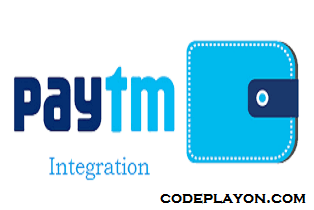android rxjava tutorial
Android RxJava, a JVM library, uses observable sequences for event-based and synchronous programming. The three O’s are the operator, observer, and observables. They are used to accomplish asynchronous tasks within our project. Multithreading is greatly simplified in our project. It helps us to determine the thread on which task we wish to complete.
Android rxjava tutorial
Table of Contents
RxJava is a Java-specific tool. RxAndroid is required in order to use RxJava on Android.
What is RxAndroid exactly?
RxAndroid, a RxJava extension for Android that can only be used in Android apps, is RxJava. RxAndroid now includes the Android-required main thread. To use multithreading in Android, we will need the looper as well as the Handler for Main thread execution.
RxAndroid provides AndroidSchedulers.
mainThread() returns a Scheduler that aids in performing tasks in the main UI thread. This thread is primarily used by the Android project. We now have AndroidSchedulers. mainThread() allows us to access the main thread of the application. This allows us to perform actions like updating the UI. Because updating the UI from the background thread is technically not possible in Android, we can use AndroidSchedulers.mainThread() to update anything on the main thread. It uses the Handler and Looper concepts internally to execute the action on the main Thread.
RxAndroid compiles RxJava internally. While RxAndroid is used in our project, the RxJava dependency remains to be used.
implementation ‘io.reactivex.rxjava3:rxjava:2.5.0’
implementation ‘io.reactivex.rxjava3:rxandroid:3.0.0’
This is because RxAndroid might not have the latest version of RxJava that was used in the project. We use RxJava dependency in order to override RxAndroid’s version of RxJava.
This is the Actual Use of android rxjava
RxJava leverages the power and capabilities of operators. As the old saying goes, RxJava has an operation for almost everything.
User Case Android rxjava #1
Let’s say we need to make an API call, and then save the result to a file. This would be a lengthy task and could cause unexpected behavior such as App Not Responding. AsyncTask might be a good choice to accomplish the above task. AsyncTask is going to be obsolete with Android R. Instead, libraries like RxJava are the best options. RxJava allows us to write less code by using it instead of AsyncTask. Because AsyncTask makes code too long and difficult to manage, it improves code management.
Android rxjava user case #2
Let’s say we need to retrieve user details from an API. Then, using the ID from the previous API to retrieve the user’s friend list, we call another API. AsyncTask can be used to retrieve multiple user details from an API. We then manage the results so that we can combine them all and return one response.
Android rxjava Example #3
Let’s say we want to get a list users and only the data that matches our current condition. The general approach is to make an API call and then filter the user’s content based on the condition. Finally, return the data. RxJava allows us to filter the data and return the API response using the filter operator. We also manage threads.
The Reactive programming principles are something that we all must have heard about when it comes to developing android apps. Although there are many resources on RxJava or RxAndroid that can help you get started, it was difficult for me to keep everything in one place. This article will briefly explain the components of RxJava and give some examples of how they could be applied to Android development.
android rxjava Reactive Programming
Let’s start by defining Reactive programming.
Reactive Programming Is a programming Paradigm It is centered around data flows and propagation change, i.e. It is all about Responding to Value Changes Let’s take, for example, the definition. x = +y+z. When we Change the value y Or z The value of x Automatically changes. You can do this by looking at the values of y And z .
Reactive extensions is an HTML library that uses Reactive Programming principles in order to create event-based and asynchronous programs using observable sequences.
RxJava – This Java-based implementation of Reactive Programming is.
RxAndroid refers to the Android platform and utilises certain classes on top RxJava libraries.
android RxJava Basics
RxJava’s building blocks are:
-
- Observable is a class that emits data or events. i.e. A class that can be used for performing some action and publishing the results.
- Observer : a class that receives data or events and takes action. i.e. A class that watches and waits for the Observable to publish results and then reacts when the Observable does.
- Observable is a class that emits data or events. i.e. A class that can be used for performing some action and publishing the results.
To know the state of the Observable, the Observer offers 4 interface methods.
-
- onSubscribe() This method is called when the Observer has subscribed to the Observable.
- onNext()This method can be called when a new item appears in the Observable.
- onError() This method is used when there is an error and data cannot be successfully emitted.
- onComplete() This method is used when the Observable successfully emits all items.
Read More Tutorial



